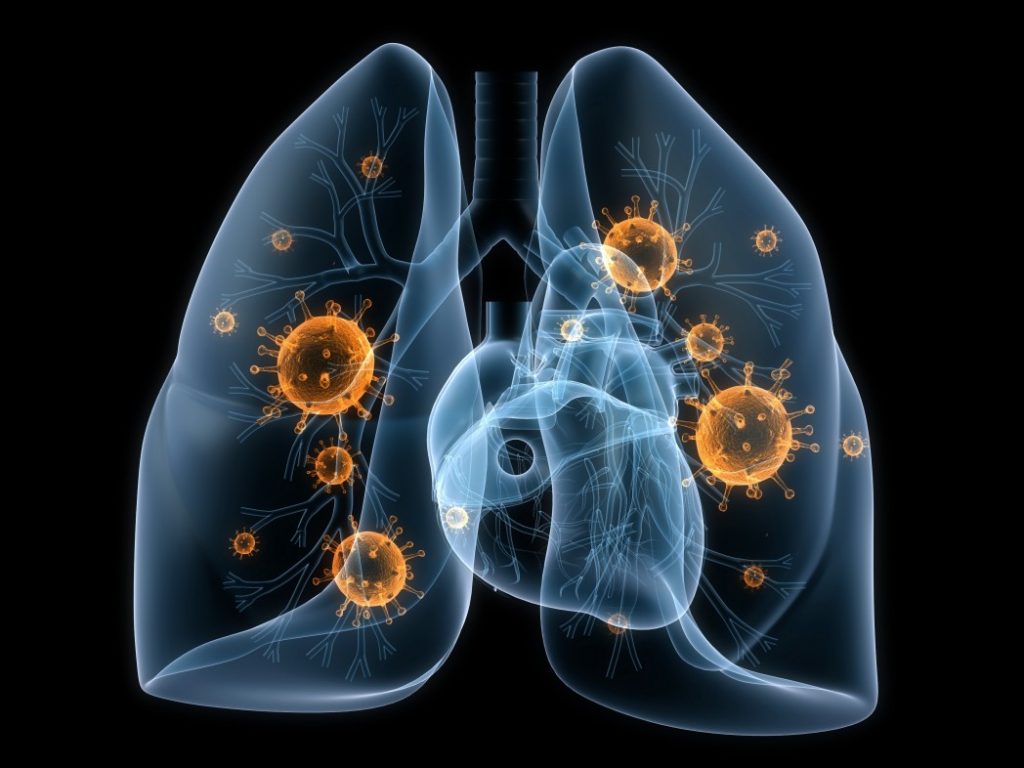Editor’s summary
Acquired drug resistance to certain targeted cancer therapies can lead to histological transformation (HT) from one tumor type to a more aggressive type. HT is a poorly understood process, so Gardner et al. designed experimental models to study the molecular events that underlie the conversion of mutant epidermal growth factor receptor (EGFR) lung adenocarcinoma (LUAD) to neuroendocrine small cell lung cancer (SCLC) (see the Perspective by Berns). Switching certain genes on and off in either alveolar type 2 cells (the precursors of LUAD) or in pulmonary neuroendocrine cells (precursors of SCLC) led to HT that mimicked that observed in human cancer. Neuroendocrine SCLC transformation was only observed when tumor cells reworked their oncogenic driver program from EGFR to the Myc oncogene. —Priscilla N. Kelly
Structured Abstract
INTRODUCTION
What determines the behavior and appearance of different cancers? Several factors may be involved, including the kind of normal cell from which a cancer arises (the cell of origin) and the set of specific genes (especially tumor suppressors and proto-oncogenes) that are altered during the conversion of a normal cell to a malignant one. The variations in appearance and behavior and the affected genes often correlate with a specific cell of origin, suggesting that different cell lineages show different responses to various genetic changes. Context is key—not every oncogene is broadly oncogenic.
Some types of cancers, such as adenocarcinomas of the lung and the prostate, undergo dramatic changes in appearance and behavior and display an altered genetic profile when they develop resistance to targeted therapies. In lung cancers, this histological transformation (HT) can result in the conversion of lung adenocarcinoma (LUAD) into an aggressive type of neuroendocrine cancer indistinguishable from small cell lung cancer (SCLC), which is therapeutically recalcitrant and connotes poor prognosis. These events are considered off-target mechanisms of resistance because the original oncogenic driver pathway is thought to be no longer critical for tumor cell proliferation. Thus, a distinct, separate driver program has emerged.
RATIONALE
The complex process of HT is difficult to characterize rigorously in human subjects. But the possibility of modeling HT in the lungs of experimental mice offers an opportunity to study the relationships among cancer phenotypes, cells of origin, and genetic alterations. To that end, we proposed to use genetic engineering to mimic the events observed in human lung HT. We planned to generate LUAD driven by a mutationally activated epidermal growth factor receptor (EGFR) gene and then to transform those tumors into SCLCs by blocking the function of the mutant EGFR gene and introducing changes in other genes, such as the oncogene Myc and the tumor suppressors Rb1 and Trp53. We would then be able to study HT in detail by performing single-cell RNA-sequencing during this process.
RESULTS
We were able to reconstruct pulmonary HT in a mouse model. We then characterized the transcriptional programs throughout three stages: during growth of EGFR-driven LUAD; in the limited disease that remained after reduction of oncogenic EGFR; and during the transformation of tumor cells into neuroendocrine SCLC. By following the expression of single oncogenes in different lung-cell lineages, we demonstrated that the process of HT is regulated by the tolerance of different cell types to distinct oncogenic drivers. Thus, whereas most lung cells are resistant to transformation by Myc, neuroendocrine cells are highly sensitive to its oncogenic effects; however, their fitness is impaired by mutated EGFR. Conversely, lung alveolar epithelial cells grow excessively in response to mutated EGFR but are impaired by Myc alone.
During the process of HT, undifferentiated stem-like cells accumulate, and some become neuroendocrine in character as SCLC emerges. This process appears to require the loss of two tumor suppressor genes, Trp53 and Rb1, that are almost universally inactivated in human SCLC. Furthermore, we found that loss of yet another tumor suppressor gene, Pten, allowed Myc to transform the AT2 lineage. However, the additional loss of Rb1 was required for transformation to a neuroendocrine phenotype. These results suggest that both Myc and Rb1 are critical regulators of neuroendocrine HT.
CONCLUSION
By developing this novel experimental model for pulmonary HT, we have recapitulated the complex sequence of events that depends on varied responses of different cell lineages to changes in a few known cancer genes. These findings will enable efforts to study the responses of various cell types to changes in other genes implicated in carcinogenesis and to explore strategies for treating aggressive cancers such as SCLC with agents that target MYC for which approved, targeted therapeutics are not yet available.
Abstract
Lung adenocarcinoma (LUAD) and small cell lung cancer (SCLC) are thought to originate from different epithelial cell types in the lung. Intriguingly, LUAD can histologically transform into SCLC after treatment with targeted therapies. In this study, we designed models to follow the conversion of LUAD to SCLC and found that the barrier to histological transformation converges on tolerance to Myc, which we implicate as a lineage-specific driver of the pulmonary neuroendocrine cell. Histological transformations are frequently accompanied by activation of the Akt pathway. Manipulating this pathway permitted tolerance to Myc as an oncogenic driver, producing rare, stem-like cells that transcriptionally resemble the pulmonary basal lineage. These findings suggest that histological transformation may require the plasticity inherent to the basal stem cell, enabling tolerance to previously incompatible oncogenic driver programs.







